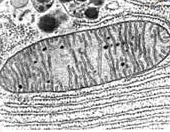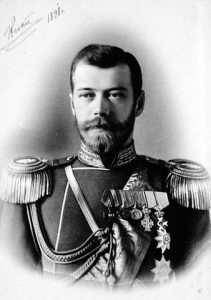

Heteroplasmy is the presence of more than one mitochondrial genome within an individual. Perhaps the most famous example of the effect of mtDNA heteroplasmy on a forensic investigation is the identification of the remains of Tsar Nicholas II. mtDNA from bones discovered in a mass grave in 1991, was identical in sequence to known relatives of the Tsar except at one position, where there was a mixture of matching (T) and mismatching (C) bases. Lingering doubt caused by this result meant that confirmation of the authenticity of the remains was delayed. Ultimately mtDNA analysis provided the needed evidence for identification, showing that the same heteroplasmy was present in mtDNA extracted from bones of the Tsar’s brother, confirming the Tsar’s identity (Ivanov et al., (1996) Nature Genetics 12(4), 417-20).
Here is what Dr. Holland had to say about the work he will present at ISHI:
Can you describe the background to the work you will be presenting?
I’ve been studying the inheritance characteristics of mtDNA, the presence and pattern of transmission of mtDNA heteroplasmy, and now the assessment of heteroplasmy using a NextGen approach, for the past 25 years. Most of my work has focused on how the findings impact forensic applications. However, I have recently expanded my research to study the biological characteristics of mtDNA; germline bottlenecks, empirical mutation rates, and the impact of deleterious heteroplasmic variants on human health.
How does this work advance the field?
The ability to detect and clearly resolve mtDNA heteroplasmy using a NextGen approach, and to report these findings in forensic cases, can significantly improve the discrimination potential of the typing system. Our work will help guide the development of best practices when applying this technology to forensic casework. This, combined with the movement towards a NextGen approach for STR and SNP analysis, will allow for widespread expansion of mtDNA analysis in the forensic community.
What specific work will you be presenting?
My laboratory is interested in how best to leverage the power of mtDNA heteroplasmy in forensic cases by using a NextGen sequencing approach. We’re looking at rates of heteroplasmy across the control region, and assessing the impact of DNA damage on the interpretation process; through our NIJ supported research (NIJ 2014-DN-BX-K022, NIJ 2015-DN-BX-K025).
We use the MiSeq from Illumina as our principal NextGen platform. It’s user-friendly and produces quality data. We typically run up to 75 samples on the instrument, as we want high read coverage; similar to high RFU values for STR peaks. This allows us to better assess low-level mtDNA heteroplasmy. We found that rates of low-level mtDNA heteroplasmy were relatively high in the control region. However, instrument noise, potential contamination, and DNA damage must be assessed when establishing interpretation thresholds and guidelines.
Key collaborators in this work are Walther Parson from Innsbruck, who is one of the leading mtDNA geneticists in the world and has been providing scientific direction and guidance on forensic applications of mtDNA analysis for decades; Ann Gross from the MN BCA who has many years of experience performing mtDNA analysis in casework and has been an active participant in moving the forensic DNA field forward through her work on SWGDAM and other advisory boards; Charla Marshall from AFDIL, where they have become a leader in the area of NextGen applications for mtDNA analysis; and Todd Bille at the ATF who is interested in NextGen applications as they relate to evidence typically encountered in his lab; exploded items, etc.
Isobel Maciver
Latest posts by Isobel Maciver (see all)
- 3D Cell Culture Models: Challenges for Cell-Based Assays - August 12, 2021
- Measuring Changing Metabolism in Cancer Cells - May 4, 2021
- A Quick Method for A Tailing PCR Products - July 8, 2019
